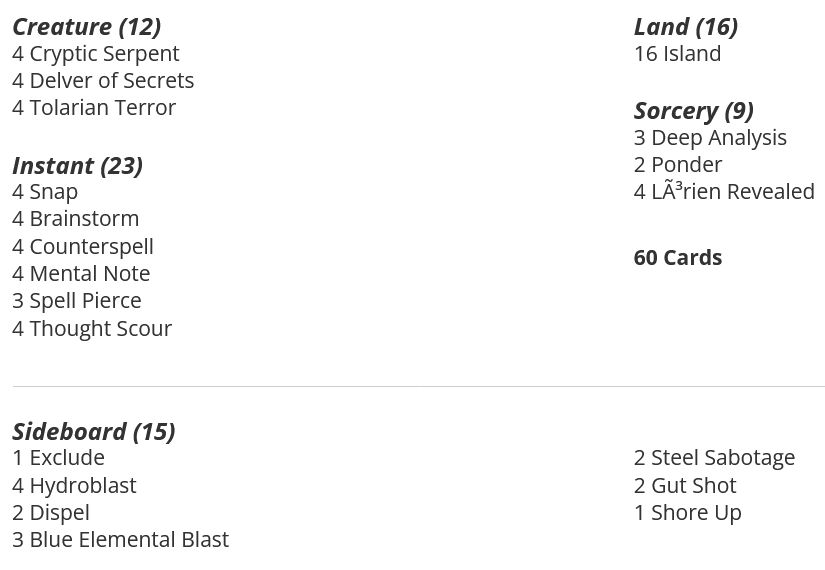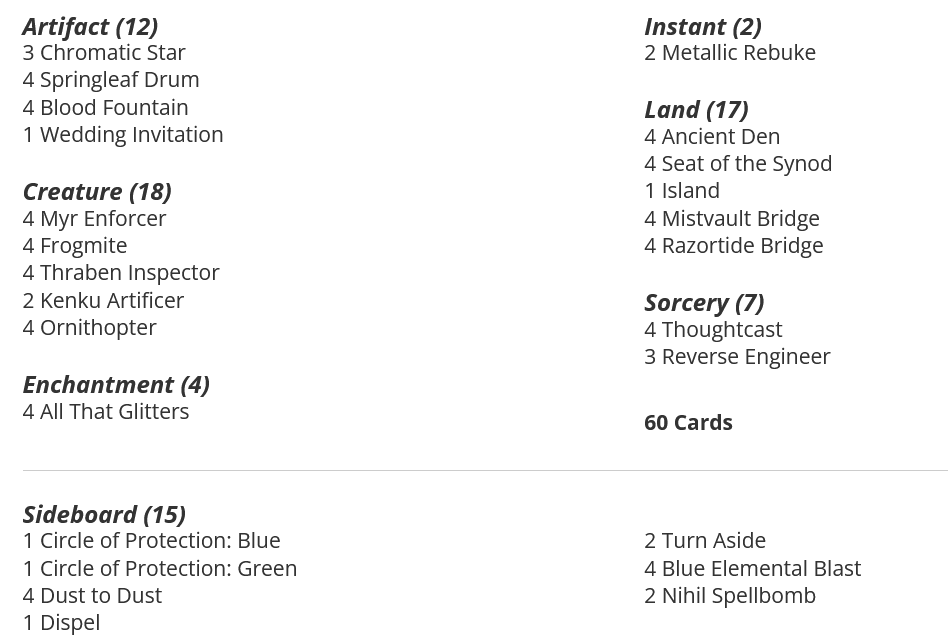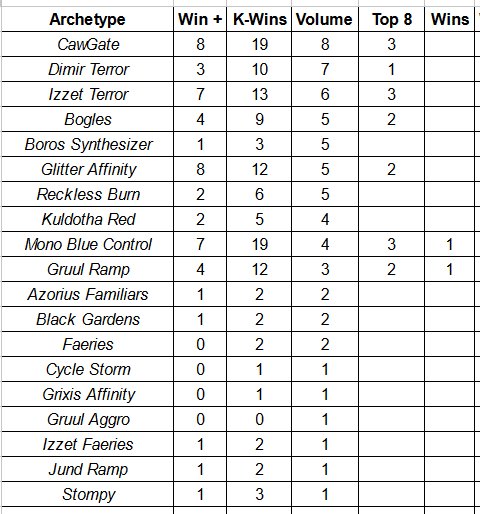I use a few different metrics when looking at the Top 32 metagame. The first is just Raw Volume. The second is Win+, which takes the sum of all wins at X-2 or better in the Swiss and assigns a score; Win+ is helpful in measuring a deck’s Swiss round performance. K-Wins takes all of a deck’s wins and subtracts its losses, Top 8 inclusive; this helps to give a measure of overall performance. The final pair is call Meta Score and Meta Score Above Replacement, which takes the average of Win+ and K-Win to try and position an archetype against its field. This number helps to provide the most robust image of a deck’s performance.
The second week of Commander Masters season is behind us and the metagame continues to evolve. After last week’s absurd performance by Boros Synthesizer, things have done anything but remain stagnant. Something old, something new, something borrowed, and something blue has definitely taken the spotlight.
First let’s explore Boros Synthesizer. It closed last week with an adjusted Meta Score Above Replacement of 3.26 – the best I’ve tracked thus far. This number is a rough representation of how much better a deck performance than an average Top 32 finish. Last week Boros just crushed the competition but this weekend it tanked with a score of -0.49. It is an accepted truism that early in seasons aggressive decks perform better because, to quote David Price, “there are no wrong threats; only wrong answers” and Boros presented a ton of threats. However after a week of people grinding out the format, the rogue’s gallery can be assembled so midrange and control decks can choose their weapon’s wisely when it comes to battling the beatdown.
This past weekend three different blue decks each place three pilots into the Top 8: Caw Gate, Izzet Terror, and Mono Blue Terror. CawGate continues to cement itself as a solid midrange option that never really goes out of style. Thanks to its mana base and flexible suite of answers it can be tuned and tweaked for most metagames. So that brings us to Izzet Terror and Mono Blue Control (or Mono Blue Terror, if you prefer). Izzet Terror had an adjusted Meta Score Above Replacement of 0.58; CawGate ended Sunday with a score of 1.09; Mono Blue lapped them with 2.21. Today I want to focus on the two Tolarian Terror and Cryptic Serpent strategies.

These two Terror decks have added Cryptic Serpent to their decks, upping their threat count. At the same time Dimir Terror decks have taken a step back in the metagame despite having a similar game plan. Dimir Terror leans on Snuff Out to survive the early game and needs its graveyard to fuel Gurmag Angler. Given this, and the noise around Spy Combo decks last week, it makes sense that people have adopted an increased amount of graveyard hate to try and constrain Dimir. So why have the other strategies been able to succeed? If I had to guess it is because while they may not have the slam dunk removal spell in Snuff Out they have enough creatures to brick wall most opposing attackers and can protect them with countermagic. Serpent and Terror can put opponents into The Abyss. Izzet can supplement this with sweepers and actual factual removal while mono blue can keep the opponent off balance with Counterspell and Snap until it can attack for the win. This is a very midrange approach to control in that it leans on having larger threats to stop attacks and therefore generate an incidental advantage.
How can one fight back against this approach. The first would be to go over them with evasive creatures (and we’ve seen the value of Murmuring Mystic skyrocket this month). Another option is to simply go larger as we have seen with Bogles. The two most recent challenges also displayed exactly what a successful All That Glitters Affinity deck can look like. Eschewing red, these decks lack Galvanic Blast and Deadly Dispute and lean on applying pressure in other ways, like an enchanted Ornithopter.

Glitter Affinity looks far closer to an aggro-control deck than the midrange control of Grixis Affinity. Lacking some of the reach of red variants, these builds want to resolve an early threat and get it over the line for lethal damage. There are some builds that try to get even lower to the ground and I for one am eagerly awaiting these decks’ final form.
Going into next week I would not focus to heavily on trying to answer a singular threat. The allure of Chainer’s Edict and Curfew are strong but I anticipate people will be attempting to fight against these decks by taking to the skies with Murmuring Mystic or other cheap flyers. Instead I would look for a deck that can either sidestep the attack step – like Simic Fog builds – or can handle threats both large and small. If someone can make a Pestilence deck work next week they could be well positioned to spike an event.
I want to take a moment to thank all my Patrons – both old and new. I am going to do my level best to keep providing you with the kind of content that brought you here in the first place. If you are interested in supporting my work, rewards for my Patreon start at just $1 and every little bit helps.
Can’t make a commitment to Patreon? I now have a Ko-Fi where you can make a one time contribution.
Looking for another way to support my work? Click here for my TCGPlayer affiliate link. Any purchases through the link let the folks there know you like my content!

